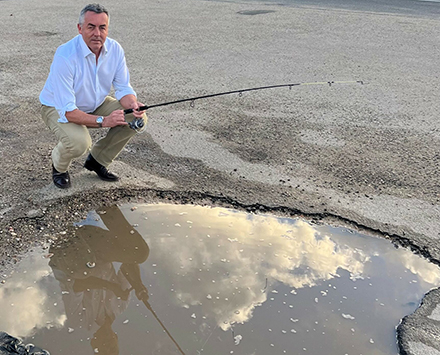The latest Timber Industry Roads Evaluation Study paints an interesting picture of the amount of traffic Victorian roads can expect to see over the next four years.
And we are talking about timber freight traffic. Forget all the rest, just timber freight traffic.
The report, prepared by Timber Towns Victoria, says that state-wide wood flow has increased in recent years, from an estimated 14.7 million tonnes for the 2016-20 forecast period to 34 million tonnes for 2023-27 forecast period. This represents about 6.9 million tonnes each year.
The report says that the forest and wood products sector depends heavily on local road infrastructure through the entire supply chain, from site preparation and establishment of plantations through to transport of manufactured wood products.
And it’s not just the obvious regions such as Gippsland and Western Victoria the report is talking about. The report also takes in Central Victoria and the Mallee.
It points out that there is ongoing pressure to increase the proportion of high productivity freight vehicles (HPFVs) which will ultimately reduce the amount of traffic on roads and make the freight task more economically efficient. However, the highly variable nature of the local road network means that not all haulage routes are suitable for all vehicle types, with factors such as pavement width and strength, road alignment, vertical profile and other safety considerations all limiting factors when determining road suitability for proposed vehicle configurations.
That in itself is an understatement.
Anyone who has driven on a country road in Victoria in recent years will attest to the shocking standard of the State’s roads.
One industry driver in the west of the State claimed recently that damage to his trucks and trailers from potholes represented his highest cost in terms of maintenance.
Revelations in the media that there will be virtually no Victorian road resurfacing program this financial year are an indictment on the Victorian State Government’s continuing financial mismanagement.
The Federal Member for Gippsland Darren Chester says lives are in danger on roads in Gippsland and across regional Australia because of the Federal Government’s failure to support local projects.
Mr Chester said local communities had no idea whether promised funding for road safety works will ever be delivered by the Minister for Infrastructure, Transport, Regional Development and Local Government Catherine King.
Leader of The Nationals and Member for Murray Plains, Peter Walsh, says that with the state’s highest road toll in seven years, and with more than half those tragedies on regional and rural roads, “the figures prove both the lie this incompetent government cares about regional Victoria and that it takes road safety seriously”.
The Nationals Member for Eastern Victoria Region, Melina Bath said her electorate was home to some of the state’s worst roads.
The TIRES report points out that the forest and wood products sector provides some 50,000 jobs across the supply chain. Total economic output, in the form of sales and service income, is $8.6 billion dollars annually, making it a significant contributor to the State’s economy.
The 2023-27 TIRES project identified 167 local roads for infrastructure maintenance and upgrade which will carry an estimated 34 million tonnes of log products over the next five years, across the four TIRES regions. The estimated value of road maintenance and upgrade works is $128.6 million across 167 roads, at an average cost of $3.72/tonne.
Again, it appears the timber industry in Victoria is being forced to operate with both hands tied behind its back by a State Government with no interest in anything that happens beyond Melbourne.







